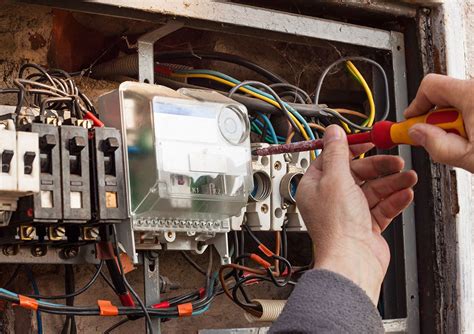Innovative mechanical engineering industry support for your unique challenges.
Innovative mechanical engineering industry support for your unique challenges.
Blog Article
Top Tips for Effective Electric System Troubleshooting
Fixing electrical systems needs a systematic method, grounded in a detailed understanding of electric concepts and security methods. The subtleties of efficient repairing expand past mere technological knowledge; comprehending exactly how to record findings and prioritize safety can dramatically influence results.
Understand the Essentials
Understanding the fundamentals of electric systems is important for effective troubleshooting, as a strong structure enables technicians to detect and deal with concerns more efficiently. A thorough grasp of electric principles, such as voltage, current, resistance, and power, is vital in recognizing the origin triggers of troubles. Voltage is the electric possible distinction that drives existing with a circuit, while resistance opposes the flow of existing, impacting the general performance of the system.
Knowledge with circuit components, consisting of resistors, capacitors, diodes, and changes, is additionally vital. Each element plays a distinctive function in circuit behavior and can impact performance when malfunctioning. Furthermore, recognizing collection and identical circuit configurations is essential, as these plans affect the circulation of voltage and existing within the system.
Specialists have to be mindful of possible threats, such as shock and short circuits, to execute risk-free troubleshooting techniques. By mastering these fundamental concepts, specialists improve their ability to perform effective diagnostics and repairs, inevitably leading to enhanced efficiency and reliability of electric systems (electrical system troubleshooting).
Gather Necessary Equipment
Reliable troubleshooting of electrical systems needs the right set of tools to identify and fix issues precisely. A well-appointed technician can substantially boost performance and performance in identifying troubles. Important devices consist of a multimeter, which determines voltage, current, and resistance, permitting for precise examinations of electrical components. Clamp meters are additionally important for measuring present without detaching the circuit, ensuring security and benefit.
Additionally, shielded hand tools such as screwdrivers, pliers, and wire strippers are vital for safely controling electrical connections. It is likewise advisable to have a circuit tester available to confirm the visibility of voltage in electrical outlets and cables. For even more complicated systems, a thermal imaging camera can help detect overheating components, showing prospective failings.

Follow an Organized Technique
Having actually collected the proper tools, the following step in repairing electric systems is to follow a systematic approach. A systematic method makes certain that specialists can determine mistakes efficiently and properly, minimizing downtime and preventing unnecessary fixings.
Begin by evaluating the system's schematic representations and specifications. Comprehending the style and functional criteria will certainly provide context for diagnosing problems. Next, separate the issue location by utilizing a procedure of removal. This involves monitoring each element methodically, beginning with the source of power and functioning in the direction of the load.
Make use of screening tools, such as multimeters and oscilloscopes, to gather objective information regarding voltage, present, and resistance at various points within the system. This empirical evidence will lead your troubleshooting initiatives and help to verify or remove potential root causes of failing.
In addition, think about ecological elements that might affect the system's performance, such as temperature level variations or moisture access. A comprehensive assessment of circuitry, connections, and components will guarantee that all possibilities are represented.
Paper Your Searchings For
Detailed paperwork is crucial in the fixing procedure of electrical systems. Accurate documents boost the performance of determining recurring problems and assist in interaction among staff member. Each finding must be diligently kept in mind, consisting of symptoms observed, examinations carried out, and the end results of those examinations. electrical system troubleshooting. This practice not only aids in understanding the source of the issue yet likewise functions as a referral for future fixing efforts.

Additionally, maintaining a log of parts changed or repair services done is vital. This information sustains supply management and can assist examine the durability and integrity of particular parts.
Eventually, the paperwork process must be complete yet succinct, allowing very easy access and evaluation - electrical system troubleshooting. By prioritizing comprehensive documents, professionals can produce a valuable expertise base that not only help in current troubleshooting but additionally empowers future maintenance efforts, consequently boosting overall system reliability

Prioritize Precaution
Identifying the intrinsic look at this site risks related to electrical systems is vital for making certain security throughout troubleshooting. Electric shock, burns, and equipment damage are just a few of the potential dangers that specialists face. Focusing on precaution is not just a legal commitment but additionally an ethical essential that safeguards both the professional and the surrounding atmosphere.
Before commencing any kind of troubleshooting job, service technicians need to don suitable individual protective tools (PPE), consisting of insulated handwear covers, safety and security glasses, and flame-resistant garments. Making certain that the workspace is dry and devoid of mess can dramatically reduce the danger of crashes. It is vital to de-energize circuits before beginning any kind of job, confirming that they are not live through the usage of a multimeter or voltage tester.
Establishing clear interaction go to these guys procedures with staff member is also vital; this guarantees that every person is aware of possible threats and the standing of the electrical system being worked on. Lastly, having an emergency response strategy in position can show important in case of visit this web-site an event. By prioritizing safety procedures, technicians can effectively minimize dangers and cultivate a more secure workplace.
Conclusion
Effective electric system repairing relies upon an extensive understanding of fundamental principles and a methodical technique. By gathering important devices, adhering to methodical assessment methods, and carefully documenting searchings for, the fixing procedure becomes more reliable and trusted. Focusing on safety actions guarantees the well-being of people entailed and the honesty of the electric system. Implementing these methods will improve the troubleshooting experience, resulting in quicker resolutions and boosted functional effectiveness in electric systems.
Report this page